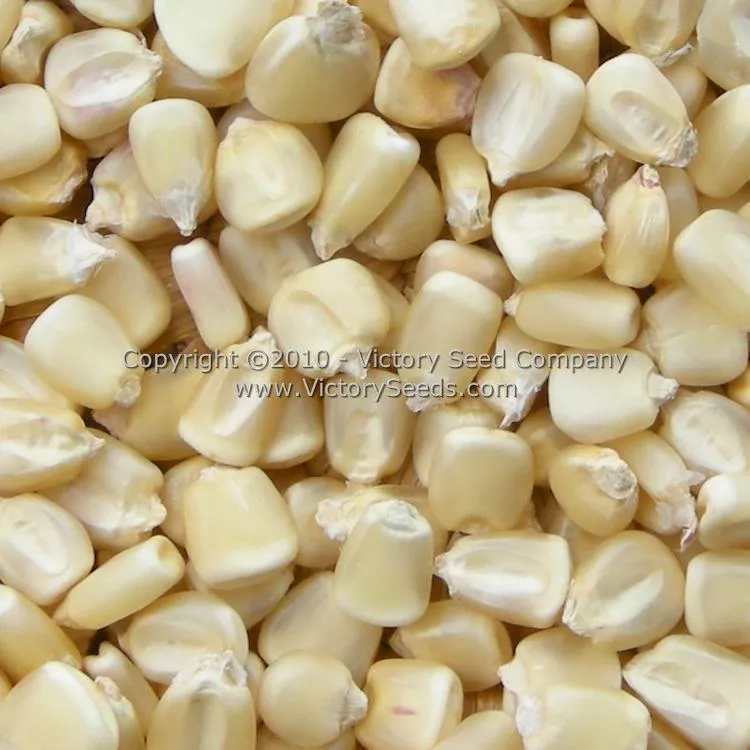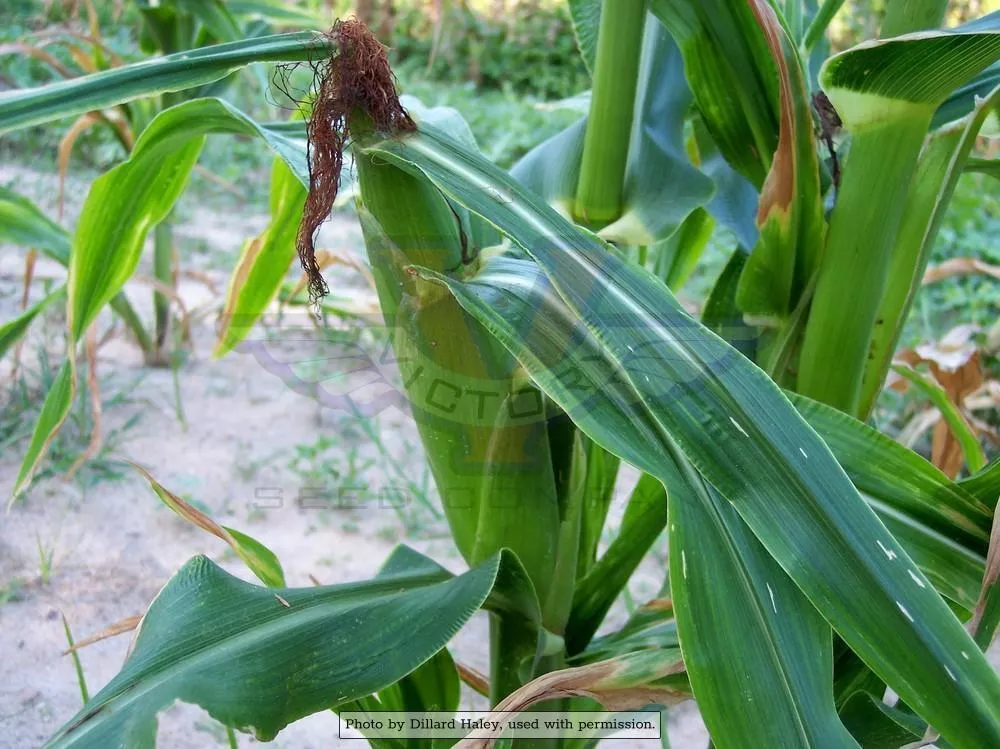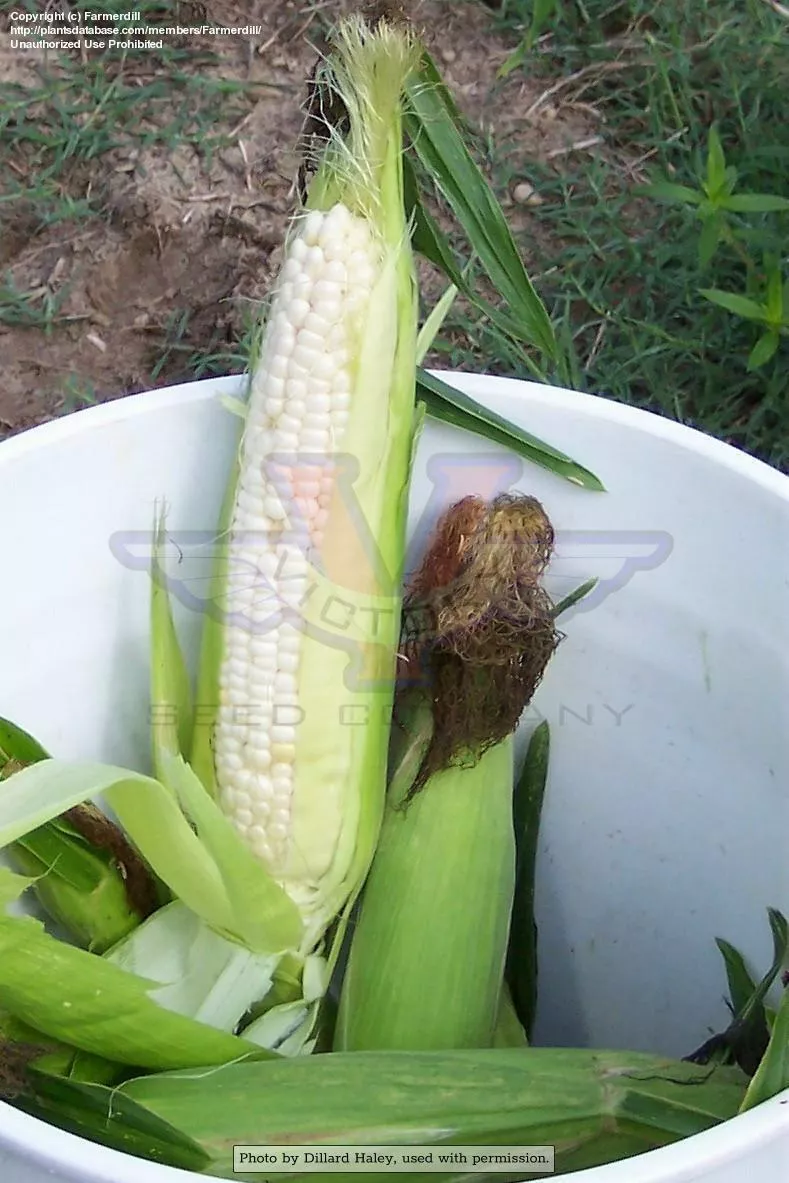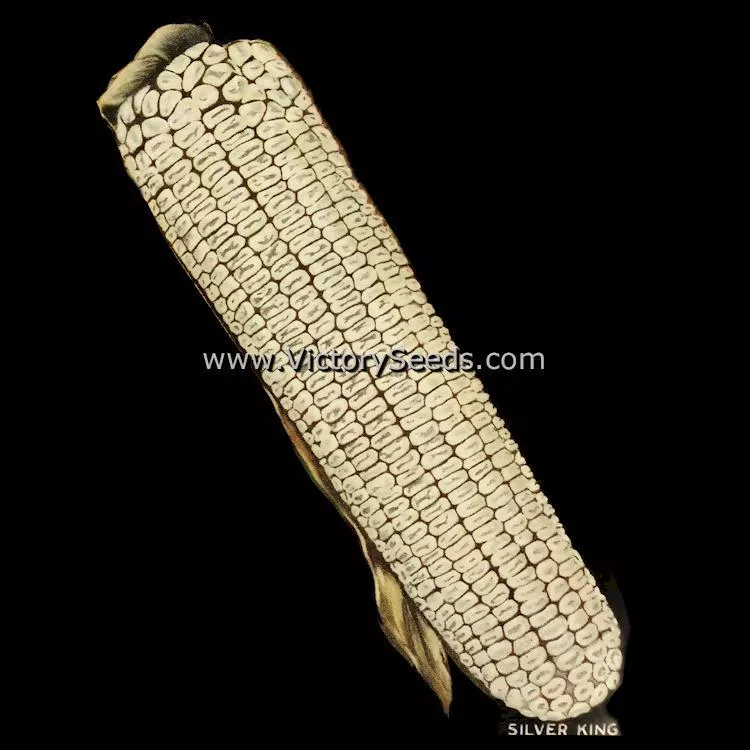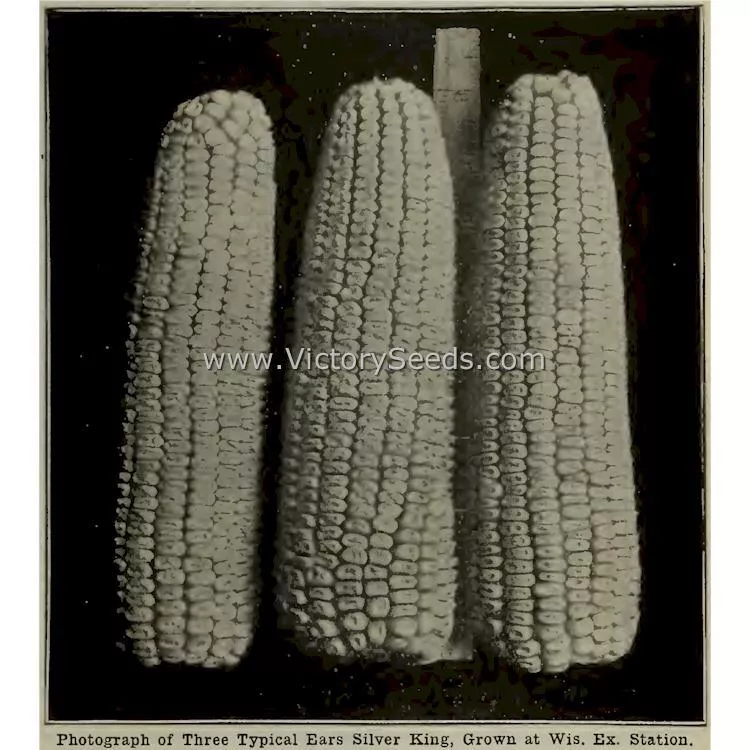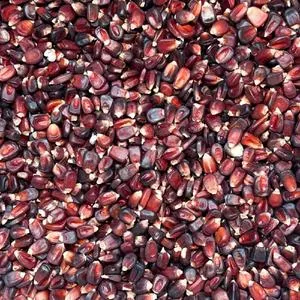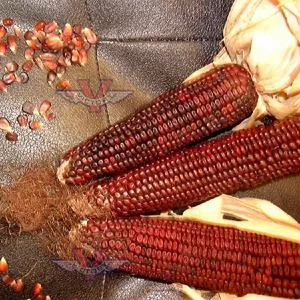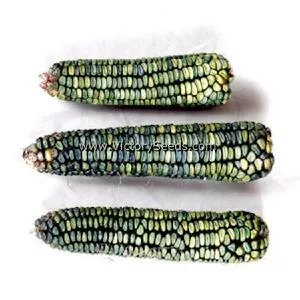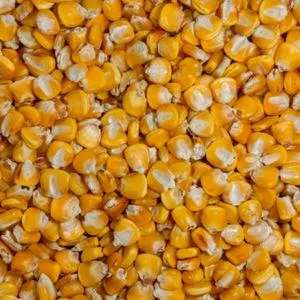




Silver King White Dent Corn
Zea mays subsp. mays
Price: $3.34
SKU: 31402511Choose a variant:
100 days - 'Silver King' dent corn, also known as 'Wisconsin No. 7', is an old dent-type, commercial heirloom roasting corn variety dating back to the turn of the 20th Century. It is not to be confused with the newer, hybrid sweet corn variety that is being sold under the same name. The ears grow eight to nine inches long and have sixteen rows of white kernels. This variety is also used for grits, meal and feed.
'Silver King' was developed by Funk Brothers Seed Company of Bloomington, Illinois as a selection, and subsequent stabilization of, 'Silvermine' and introduced in 1903.[2] In 1904, Professor Moore of the Wisconsin Agricultural Experiment Station obtained a sample, described the variety as, "... a white dent corn with medium sized ears. The kernels are medium deep and have a rather rough dent. The stalks reach a good height and are very leafy hence the excellence of this variety for silage purposes," and released it into Wisconsin, presumably as 'Wisconsin No. 7'.[1]
'Silver King' was developed by Funk Brothers Seed Company of Bloomington, Illinois as a selection, and subsequent stabilization of, 'Silvermine' and introduced in 1903.[2] In 1904, Professor Moore of the Wisconsin Agricultural Experiment Station obtained a sample, described the variety as, "... a white dent corn with medium sized ears. The kernels are medium deep and have a rather rough dent. The stalks reach a good height and are very leafy hence the excellence of this variety for silage purposes," and released it into Wisconsin, presumably as 'Wisconsin No. 7'.[1]
Special Groups: Market Growers
Genetic Classification: Open Pollinated
Genetic Classification: Open Pollinated
Planting Instructions:
Soil must be at least 65ºF to germinate. Be patient and do not plant too early or you will waste a lot of seed! Plant in full sun and keep it watered. Corn is a wind-pollinated plant. Plant in blocks several rows wide to ensure full ears.
Sow seeds about 1½ to 2½ inch deep, 3 to 4 inches apart, in rows spaced 24 to 30 inches apart. Thin to 6 to 12 inches apart.
Harvest Information:
Pick the ears for dry grain or decoration when the husks are dry and the kernels are hard enough that you cannot make a dent in them with your fingernail. Many people pick the ears too early when kernels are still soft. If this is done they shrivel up and shrink and their beauty is destroyed. They cannot finish maturing once they have been picked.
Even though the ears look dry, there remains moisture deep within the cob. If you were to enclose them in a box, the moisture would cause them to sour and mold. You may let them dry longer on the plants if neither weather nor predators are damaging them. Otherwise hang them up or lay them out in the open until they are completely dry inside.
Sow seeds about 1½ to 2½ inch deep, 3 to 4 inches apart, in rows spaced 24 to 30 inches apart. Thin to 6 to 12 inches apart.
Harvest Information:
Pick the ears for dry grain or decoration when the husks are dry and the kernels are hard enough that you cannot make a dent in them with your fingernail. Many people pick the ears too early when kernels are still soft. If this is done they shrivel up and shrink and their beauty is destroyed. They cannot finish maturing once they have been picked.
Even though the ears look dry, there remains moisture deep within the cob. If you were to enclose them in a box, the moisture would cause them to sour and mold. You may let them dry longer on the plants if neither weather nor predators are damaging them. Otherwise hang them up or lay them out in the open until they are completely dry inside.
Informational References:
- "Corn in Montana History, Characteristics, Adaptation" - Bulletin 7, Montana A. E. S., Alfred Atkinson & Milburn Lincoln Wilson, 1915.
- "Funk Bros. Seed Co. 1903," Funk Brothers Seed Company, Bloomington, Illinois, 1903.
- "Corn: Growing, Judging, Breeding, Feeding, Marketing," M. L. Bowman and B. W. Crossley, Waterloo, Iowa, 1908.
Customer Reviews:
Do you have experience with this one? 📝 📣 Write a review!
No reviews have been posted yet.

